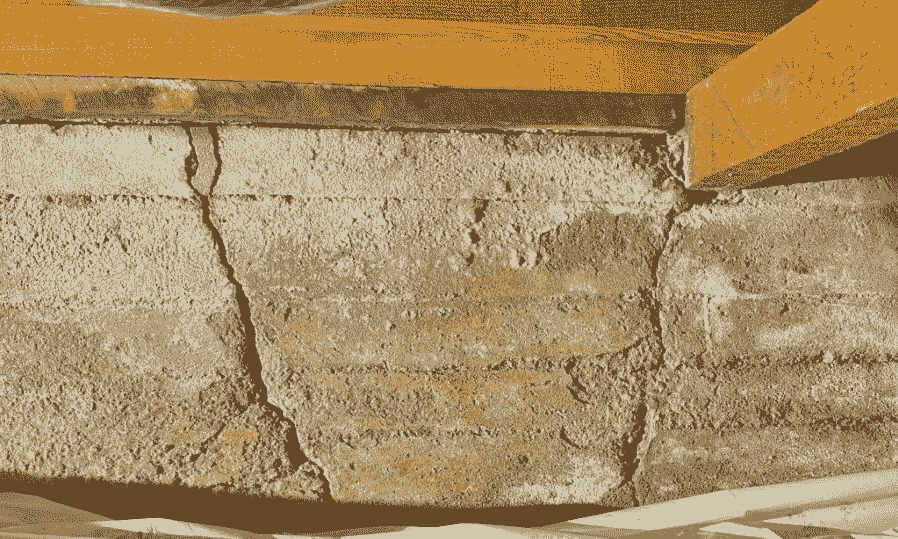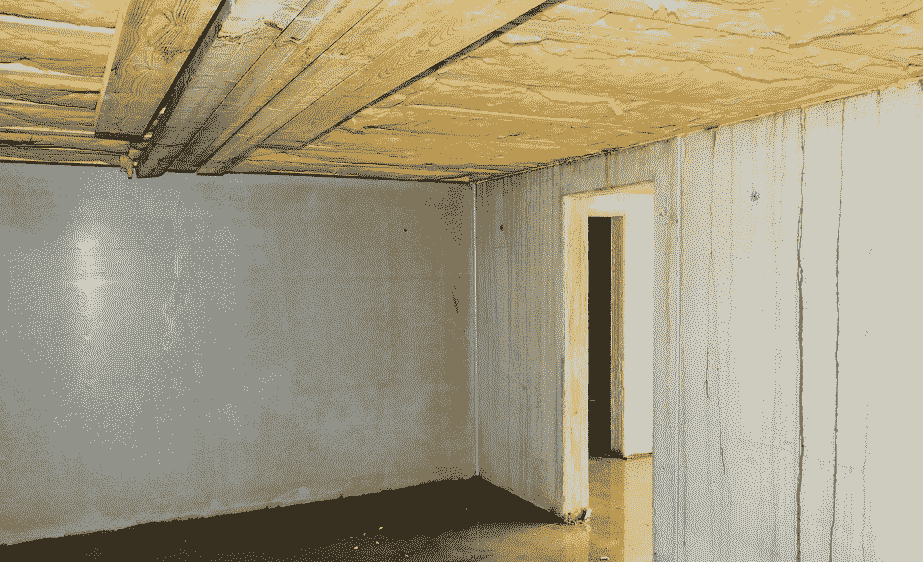Welcome to the “Addressing Foundation and Basement Damage: Troubleshooting Guide.” Your home’s foundation and basement are its structural backbone, and damage to these areas can be a significant concern. This comprehensive guide aims to empower homeowners with essential knowledge and practical insights to tackle foundation and basement issues effectively. From understanding common causes and identifying warning signs to making informed decisions about repairs, preventive measures, and budget considerations, this guide covers it all. Whether you’re a DIY enthusiast or seeking professional help, our troubleshooting guide equips you with the tools needed to safeguard your home’s stability, value, and long-term integrity. Explore the following sections to navigate through this invaluable resource and take proactive steps to address and prevent foundation and basement damage.
Foundation and Basement Damage: A Comprehensive Troubleshooting Guide
In the realm of homeownership, Olimpia’s Biohazard & Restoration LLC discusses few issues are as critical and potentially daunting as addressing foundation and basement damage.


Understanding Common Causes of Foundation and Basement Damage:
Foundation and basement damage can be caused by a variety of factors, including soil settlement, water intrusion, poor construction practices, and natural disasters. Soil settlement occurs when the soil beneath the foundation compresses or shifts, leading to cracks and structural issues. Water intrusion can weaken the foundation and cause basement flooding, often due to inadequate drainage systems. Poor construction practices can result in subpar foundations or basements, which are more susceptible to damage. Natural disasters like earthquakes or floods can also wreak havoc on these structures. Understanding these common causes is the first step in addressing and preventing foundation and basement damage. Water damage restoration is a vital component of addressing foundation and basement damage, ensuring that the affected structures are thoroughly repaired and restored to their pre-damage condition.
Signs and Symptoms: How to Detect Foundation and Basement Issues:
Recognizing the signs and symptoms of foundation and basement damage is crucial for early intervention. Common indicators include cracks in walls or floors, doors and windows that don’t close properly, uneven or sagging floors, and moisture or mold in the basement. It’s essential to regularly inspect your home for these signs and address them promptly to prevent further damage. Additionally, some symptoms may be less obvious, such as subtle shifts in the level of your floors or minor wall cracks, which can still be indicative of underlying issues. Learning to identify these signs can save you from costly repairs in the future. Conducting a flood risk assessment for homes is a proactive measure that can help homeowners anticipate potential foundation and basement damage, allowing for timely prevention and mitigation strategies.
Foundation vs. Basement Damage: Key Differences and Similarities:
While both foundation and basement damage can be concerning, they differ in their nature and impact. Foundation damage typically involves issues with the structural integrity of the entire building, as the foundation supports the weight of the entire structure. Basement damage, on the other hand, may primarily affect the lower level and can include problems like leaks and moisture. However, these two types of damage can also be interconnected, as a damaged foundation can lead to basement issues. Understanding the distinctions and connections between these types of damage helps in diagnosing and resolving the problems effectively.
The Importance of Timely Foundation and Basement Repairs:
Delaying repairs for foundation and basement damage can lead to more extensive and costly issues. When left untreated, cracks can widen, water damage can worsen, and structural problems can escalate. Moreover, neglecting repairs can compromise the safety of the building and reduce its resale value. Timely repairs not only mitigate the damage but also help maintain the overall integrity and longevity of your home. Therefore, it’s crucial to address any signs of damage promptly to avoid more significant problems down the road.
Troubleshooting Guide: Step-by-Step Inspection and Assessment:
A systematic troubleshooting guide is essential for identifying the root causes of foundation and basement damage. It typically involves a step-by-step inspection process that covers both interior and exterior aspects of your home. Interior inspections may include examining wall and floor surfaces, checking for moisture or mold, and assessing structural elements. Exterior inspections can involve evaluating the condition of the foundation, drainage systems, and landscaping. This comprehensive approach ensures that no underlying issues are overlooked and helps determine the appropriate course of action for repairs or preventive measures. When addressing foundation and basement damage due to water intrusion, recovering valuables after water damage becomes a priority, as it combines restoration efforts with the preservation of cherished possessions affected by the flooding.
DIY Solutions vs. Professional Services: Making the Right Choice:
When faced with foundation or basement damage, homeowners often wonder whether they can tackle the repairs themselves or if they should hire a professional. DIY solutions may be suitable for minor cosmetic issues, but for structural problems or extensive damage, it’s typically best to enlist the expertise of a qualified contractor or structural engineer. This section explores the advantages and limitations of both DIY and professional approaches, helping homeowners make informed decisions based on the severity of the damage and their skill level.
Preventive Measures: Tips for Avoiding Future Foundation and Basement Problems:
Preventing foundation and basement damage is often more cost-effective than dealing with repairs. This section provides valuable tips and strategies for homeowners to proactively protect their homes from potential issues. Recommendations may include maintaining proper drainage, monitoring soil moisture levels, ensuring proper ventilation in basements, and investing in routine inspections and maintenance. Implementing these preventive measures can help homeowners avoid costly repairs and ensure the long-term stability of their homes.


Cost Considerations: Budgeting for Foundation and Basement Repairs:
Repairing foundation and basement damage can be a significant financial undertaking. This section discusses the various factors that influence the cost of repairs, such as the extent of the damage, the chosen repair method, and whether professional services are required. It also provides guidance on budgeting for these expenses, including obtaining multiple quotes from contractors, exploring financing options, and considering insurance coverage if applicable. Having a clear understanding of the potential costs involved is essential for homeowners to make informed financial decisions.
Foundation and Basement Materials: Choosing the Right Ones for Durability:
The materials used in foundation and basement construction play a critical role in their durability and resilience. This section explores different construction materials and their pros and cons, such as poured concrete, concrete blocks, and reinforced steel. It also discusses advancements in foundation and basement materials that enhance longevity and resistance to damage. Making informed choices about the materials used in construction or repairs can significantly impact the long-term stability and resilience of these critical building components.
Case Studies: Real-Life Examples of Successful Foundation and Basement Damage Remediation:
Real-life case studies provide valuable insights into how foundation and basement damage can be successfully addressed. This section presents examples of homeowners who faced various issues, the steps they took to resolve them, and the outcomes of their efforts. These case studies serve as practical illustrations of the troubleshooting and repair processes discussed throughout the guide, offering inspiration and guidance to those dealing with similar challenges. Learning from the experiences of others can be a valuable resource in addressing foundation and basement damage effectively.
FAQs:
FAQ 1: What are the most common signs of foundation and basement damage?
Common signs include cracks in walls or floors, doors and windows that don’t close properly, uneven floors, and basement moisture or mold. Look for these symptoms, as addressing them early can prevent more extensive damage.
FAQ 2: Can I repair foundation and basement damage myself?
Minor cosmetic issues may be suitable for DIY repairs, but for structural problems, it’s best to hire a professional. DIY approaches should align with your skill level, as incorrect repairs can worsen the situation.
FAQ 3: How can I prevent future foundation and basement problems?
Preventive measures include maintaining proper drainage, monitoring soil moisture levels, ensuring proper ventilation in basements, and investing in routine inspections and maintenance. These steps help protect your home from potential issues and costly repairs down the road.
Conclusion:
In conclusion, addressing foundation and basement damage requires vigilance, knowledge, and timely action. Understanding the common causes, recognizing signs, and comprehending the importance of swift repairs are fundamental. A systematic troubleshooting guide aids in identifying the root issues, while choosing between DIY and professional solutions is pivotal in ensuring effective remediation.
Moreover, the significance of preventive measures cannot be overstated. Proactively safeguarding your home through proper drainage, moisture control, and regular inspections can save you from the financial and emotional stress of dealing with extensive damage. Additionally, budgeting wisely and making informed choices regarding construction materials contribute to long-term stability.
Lastly, real-life case studies serve as invaluable sources of inspiration and guidance. By incorporating these principles and practices, you can successfully address foundation and basement damage, ensuring the safety, durability, and value of your home for years to come.
